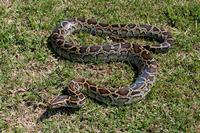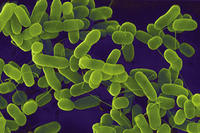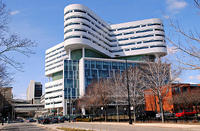-
Detecting biological terror agents
PositiveID Corporation is testing its M-BAND bioagent detection system in preparation for DHS’s $3 billion BioWatch procurement; M-BAND can be remotely set to detect for DNA-based pathogens alone, with or without either RNA-based organisms or toxins, or for all three types of pathogens simultaneously at remotely programmable intervals
-
-
New biosensor checks for toxicity in real time
Researchers have married biology and engineering to develop a biosensor – called Dip Chip – that can warn of toxicity in real time; one of the chip’s advantages is its ability to identify toxicity as a biological quality instead of specific toxic chemicals; because the chip measures general toxicity, it will pick up on any and all toxic materials — even those that have not been discovered or invented yet
-
-
Using LED technology for UV disinfection
UV light can be used to disinfect, treat drinking-water, sterilize surgical tools, and more; technologies that use aluminum nitride LEDs to create UV light, however, have been severely limited because the substrates which served as the foundation for these semiconductors absorbed wavelengths of UV light which are crucial to applications in sterilization and water treatment technologies; researchers have developed a solution to the problem
-
-
Bomb-sniffing dogs used in Everglades python invasion

Burmese pythons have invaded the Florida Everglades, adapting well to the Everglades environment; they have also been wreaking havoc with the delicate ecosystem of the area; now, there is a new weapon in the fight against the Burmese python: dogs, trained to sniff out explosives, are being re-trained to locate the Burmese python
-
-
Rapid test strips detect swimming water contamination

Water-testing technology has never been fast enough to keep up with changing conditions, nor accessible enough to check all waters; researchers have developed a rapid testing method using a simple paper strip that can detect E. coli in water within minutes; the new tool can close the gap between outbreak and detection, improving public safety
-
-
More efficient bioterrorism response plan
In the event of a bioterror attack on a building (think: the 2011 anthrax attack on the offices of two Democratic Senators, Tom Daschle of South Dakota and Patrick Leahy of Vermont), the current approach to decontamination is to clean up the building until no pathogens can be detected; researchers suggest, however, that whether or not pathogens are found depends greatly upon how extensively the buildings are tested
-
-
PositiveID’s M-BAND fits the bill for $3 billion BioWatch program
DHS’s $3.1 billion BioWatch program aims to place biosensors on top of utility poles and buildings in major American cities in order to detect bioterror attacks; PositiveID says its M-BAND solution is well positioned to be picked up by DHS for the program
-
-
Detection technology detects viruses, pathogens within 24 hours
New detection technology could enable food safety professionals, law enforcement, medical professionals, and others to detect within twenty-four hours any virus or bacteria that has been sequenced and included among the array’s probes
-
-
MRIGlobal awarded $9 million to evaluate detection gear
Kansas City company in a $9 million contract with the U.S. Army to test and evaluate equipment to identify chemical, biological, and radiological hazards in the field
-
-
Army scientists work to improve biothreat detection
A married couple, both scientists working at the U.S. Army’s Edgewood Chemical Biological Center, one of forty-five Biosafety Level 3 labs in the United States; they collaborate on improving the ability of soldiers and first responders to detect, identify, and protect against potentially lethal biological threat agents
-
-
Japanese military buys biowarfare detectors
The U.S. military deploy the Joint Biological Point Detection System (JBPDS), and the Japanese military want to do the same, awarding a North Carolina company a $9 million contract
-
-
Chicago's new bio-attack response facility

Chicago is preparing itself for a biological attack with the recent unveiling of a new 40,000 square-foot, fourteen story state-of the-art medical decontamination facility; the new facility is fully equipped to handle a sudden influx of patients from a biological attack or other mass casualty incident
-
-
CDC releases report detailing bio-chem lab detection capabilities
Last week the U.S. Centers for Disease Control and Prevention (CDC) released a report detailing its latest advancements in local and state laboratories’ abilities to identify dangerous biological and chemical substances
-
-
University lab focuses on deadly natural biological agents
In the decade since the Center for Biological Defense at the University of South Florida opened, the research facility has shifted its focus from man-made biological agents to detecting natural biological threats
-
-
Detecting bioterror attacks
About 80 percent of the U.S. population lives in the thirty largest cities in the United States; the government has deployed a secret system of biosensors to detect bioterror attacks; the location of the sensors, and the pathogens they search for, are kept secret so terrorists would not be able to tamper with the sensors or evade them (officially, even the list of cities where the system is deployed is kept secret)
-
- All
- Regional
- Water
- Biometrics
- Borders/Immig
- Business
- Cybersecurity
- Detection
- Disasters
- Government
- Infrastructure
- International
- Public health
- Public Safety
- Communication interoperabillity
- Emergency services
- Emergency medical services
- Fire
- First response
- IEDs
- Law Enforcement
- Law Enforcement Technology
- Military technology
- Nonlethal weapons
- Nuclear weapons
- Personal protection equipment
- Police
- Notification /alert systems
- Situational awareness
- Weapons systems
- Sci-Tech
- Sector Reports
- Surveillance
- Transportation
Advertising & Marketing: advertise@newswirepubs.com
Editorial: editor@newswirepubs.com
General: info@newswirepubs.com
2010-2011 © News Wire Publications, LLC News Wire Publications, LLC
220 Old Country Road | Suite 200 | Mineola | New York | 11501
Permissions and Policies
Editorial: editor@newswirepubs.com
General: info@newswirepubs.com
2010-2011 © News Wire Publications, LLC News Wire Publications, LLC
220 Old Country Road | Suite 200 | Mineola | New York | 11501
Permissions and Policies
